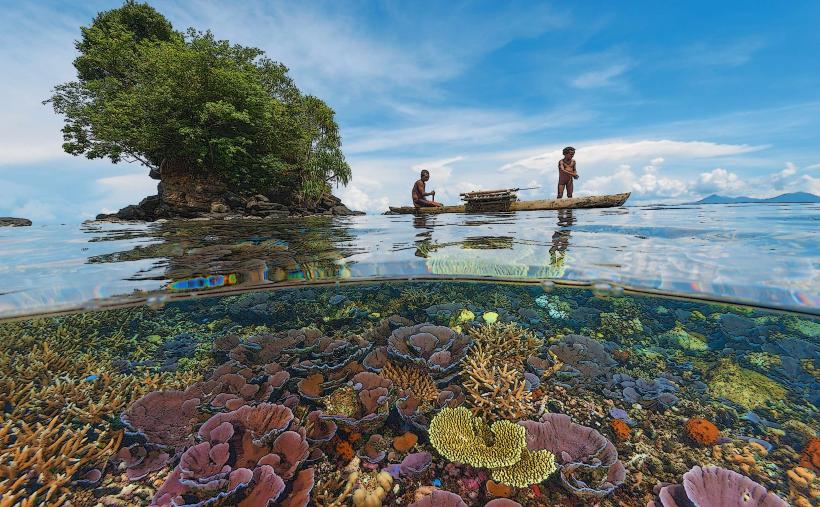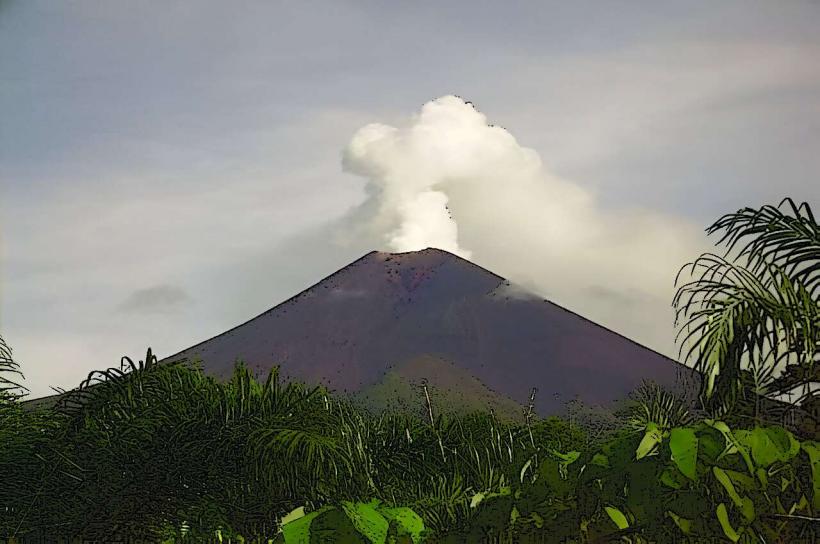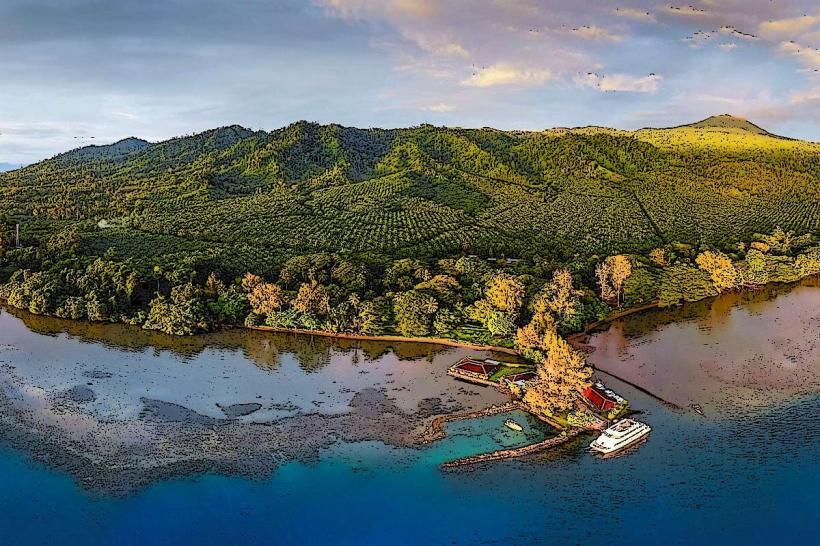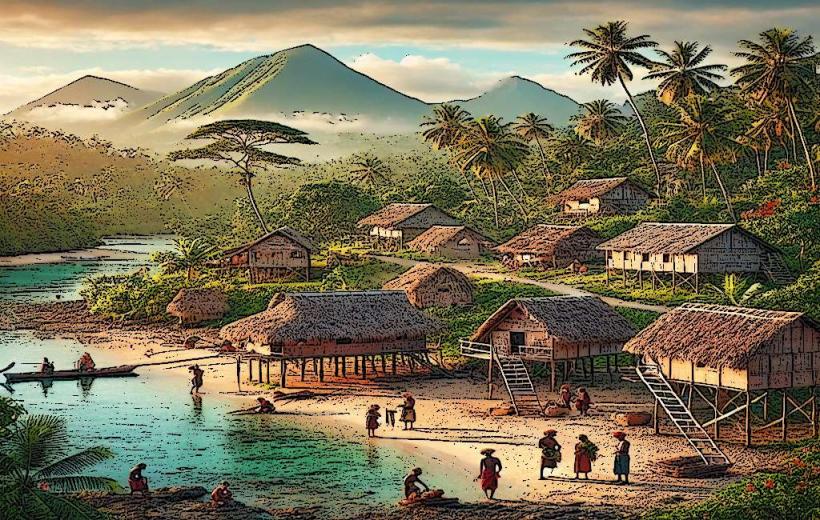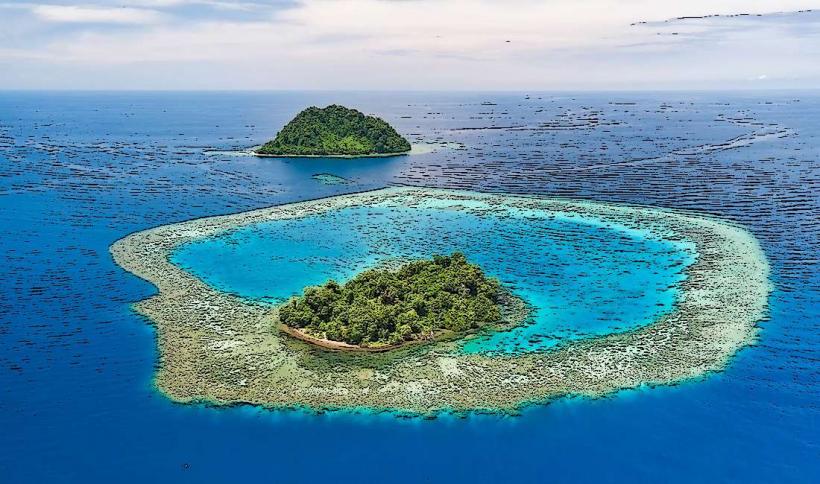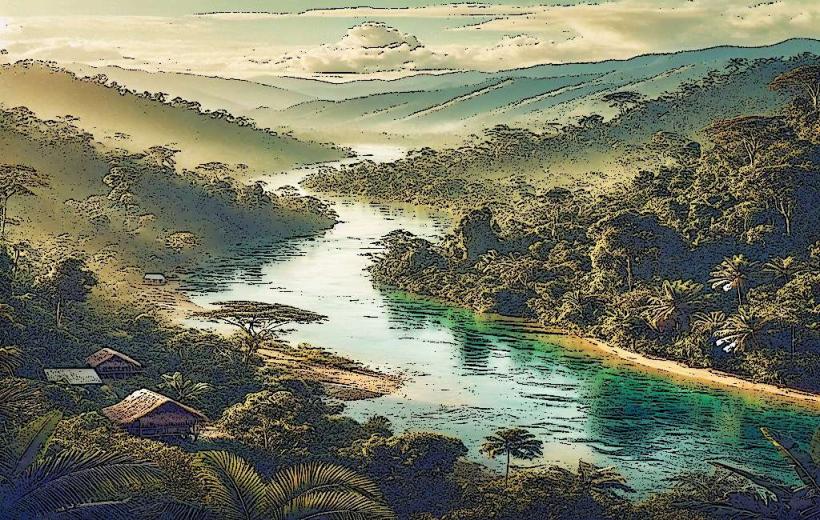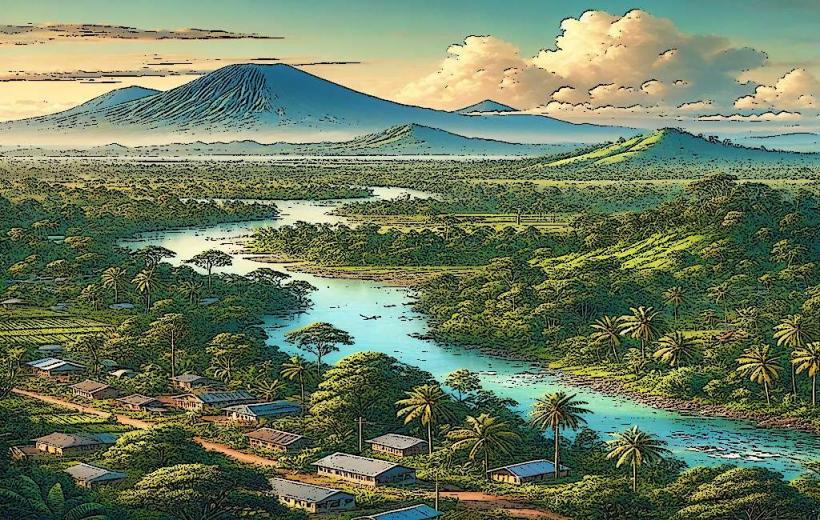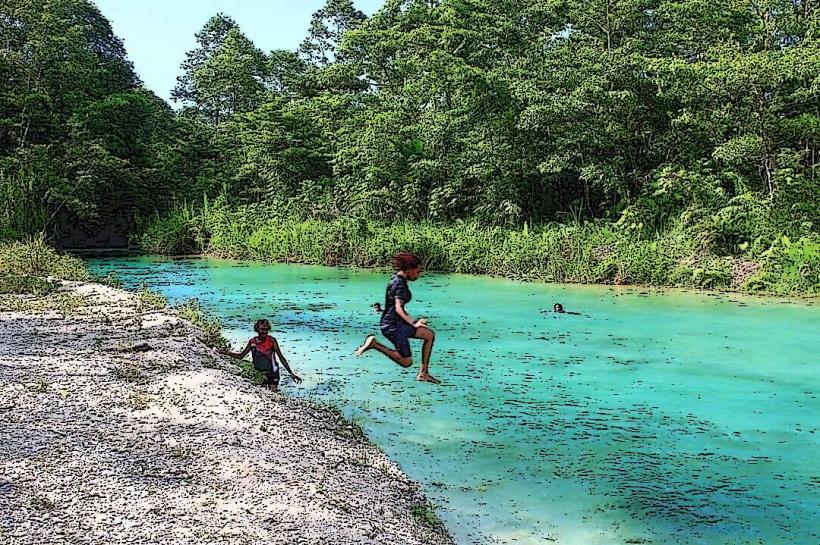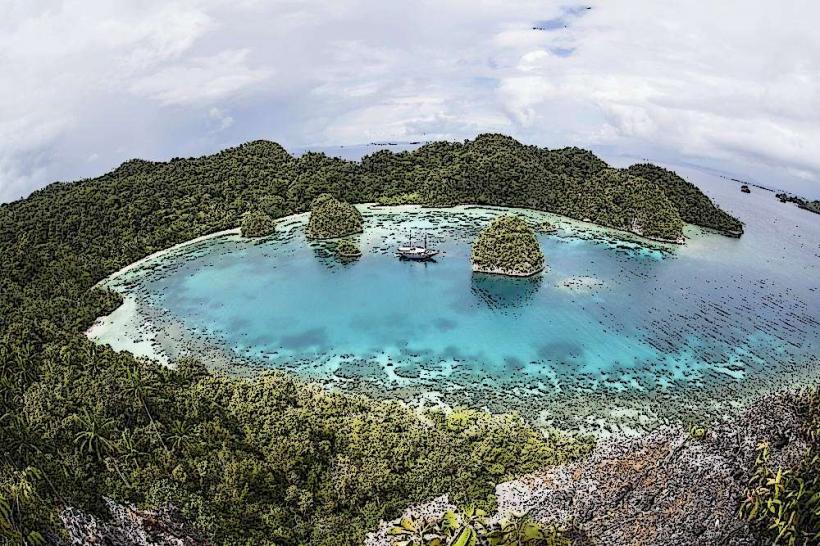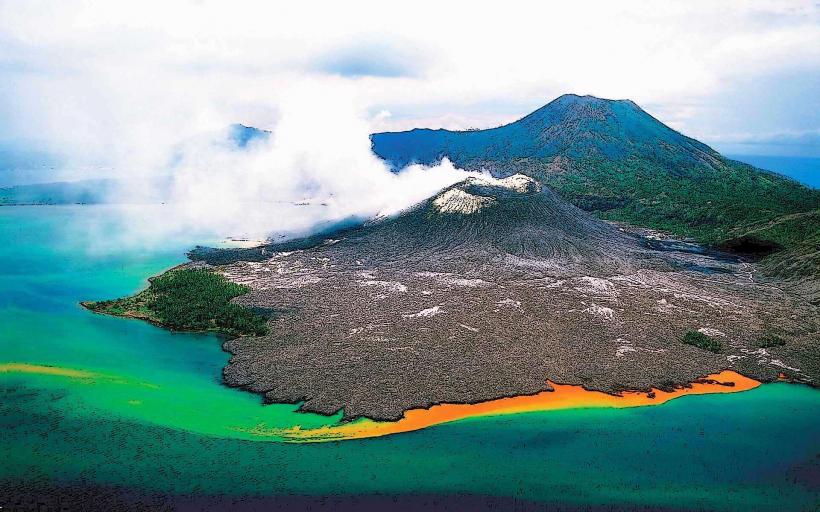Information
Landmark: Nakanai MountainsCity: West New Britain
Country: Papua New Guinea
Continent: Australia
The Nakanai Mountains are a prominent mountain range located on the island of New Britain in Papua New Guinea, within the East New Britain Province. Known for their stunning natural beauty, these mountains feature a mix of dramatic limestone formations, dense rainforests, unique biodiversity, and some of the largest cave systems in the world. They are part of a globally recognized biodiversity hotspot, offering exceptional opportunities for exploration and scientific study.
Geography & Environment
The Nakanai Mountains stretch across the central part of New Britain, rising steeply from the coastline to form rugged peaks and plateaus. The mountains are primarily composed of limestone, which has led to the formation of extensive cave systems, sinkholes, and underground rivers. The region is covered by dense tropical rainforest, which is home to a vast array of endemic flora and fauna.
Key Features
Karst Topography:
The Nakanai Mountains are famous for their karst landscape, featuring:
- Cave Systems: These include some of the world’s largest and deepest caves, such as Minyé, Wowo Gap, and Nare caves.
- Sinkholes: Massive sinkholes, often surrounded by vertical cliffs, are found throughout the range.
- Underground Rivers: The limestone geology has carved subterranean rivers that run for kilometers beneath the mountains.
Rainforest Ecosystem:
The dense rainforest that blankets the mountains is part of a UNESCO-recognized World Heritage Tentative Site for its ecological importance. This pristine environment supports diverse species, including many that are endemic to the region.
Waterfalls:
The mountains are home to dramatic waterfalls that cascade from towering cliffs, often hidden within the rainforest or emerging from underground river systems.
Biodiversity
The Nakanai Mountains are a haven for wildlife, with many species found nowhere else in the world. The ecosystem includes:
- Birds: Birds-of-paradise, hornbills, and kingfishers are common.
- Mammals: Tree kangaroos, possums, and flying foxes inhabit the forests.
- Reptiles and Amphibians: Unique frogs, geckos, and snakes thrive in this isolated environment.
- Insects: The area is renowned for its rich variety of insects, including rare and colorful butterflies.
Cave Exploration
The Nakanai cave systems are among the most challenging and rewarding destinations for cavers. Notable caves include:
- Minyé Cave: Known for its vast chambers and underground rivers.
- Nare Cave: Features extensive river systems and is a favorite for spelunking expeditions.
- Wowo Gap: A massive vertical cave, considered one of the deepest in the region.
These caves have attracted international scientific teams for mapping and studying their unique geological and hydrological features.
Cultural and Environmental Significance
The Nakanai Mountains are not only an ecological treasure but also hold cultural significance for the indigenous communities of New Britain. The forests provide resources for traditional livelihoods, and the caves often have spiritual and cultural importance. Efforts are ongoing to conserve the area while respecting local traditions.
Accessibility
Reaching the Nakanai Mountains is challenging due to their remote location and rugged terrain. Travel typically involves:
- Flying into Rabaul or Kokopo, the main towns on New Britain.
- Taking a combination of road and river transport to access the foothills.
- Trekking or using local guides to navigate the dense forest and mountainous paths.
Adventures and Activities
- Caving: Exploring the world-class cave systems is a must for experienced adventurers.
- Trekking: Guided treks through the rainforest provide opportunities to witness the region's natural beauty and wildlife.
- Birdwatching: The Nakanai Mountains are a paradise for bird enthusiasts, with opportunities to spot rare and colorful species.
- Photography: The dramatic landscapes, lush greenery, and unique geological formations make the mountains a photographer’s dream.
Conservation Efforts
The Nakanai Mountains face threats from logging and development, but significant conservation efforts are in place to protect their unique environment. Organizations and local communities work together to preserve the area, balancing ecological integrity with sustainable use.
Why Visit?
The Nakanai Mountains are an unparalleled destination for nature lovers, adventurers, and scientists. Their remoteness and ecological richness provide an unforgettable experience for those willing to venture into one of Papua New Guinea's most pristine and mysterious regions.

